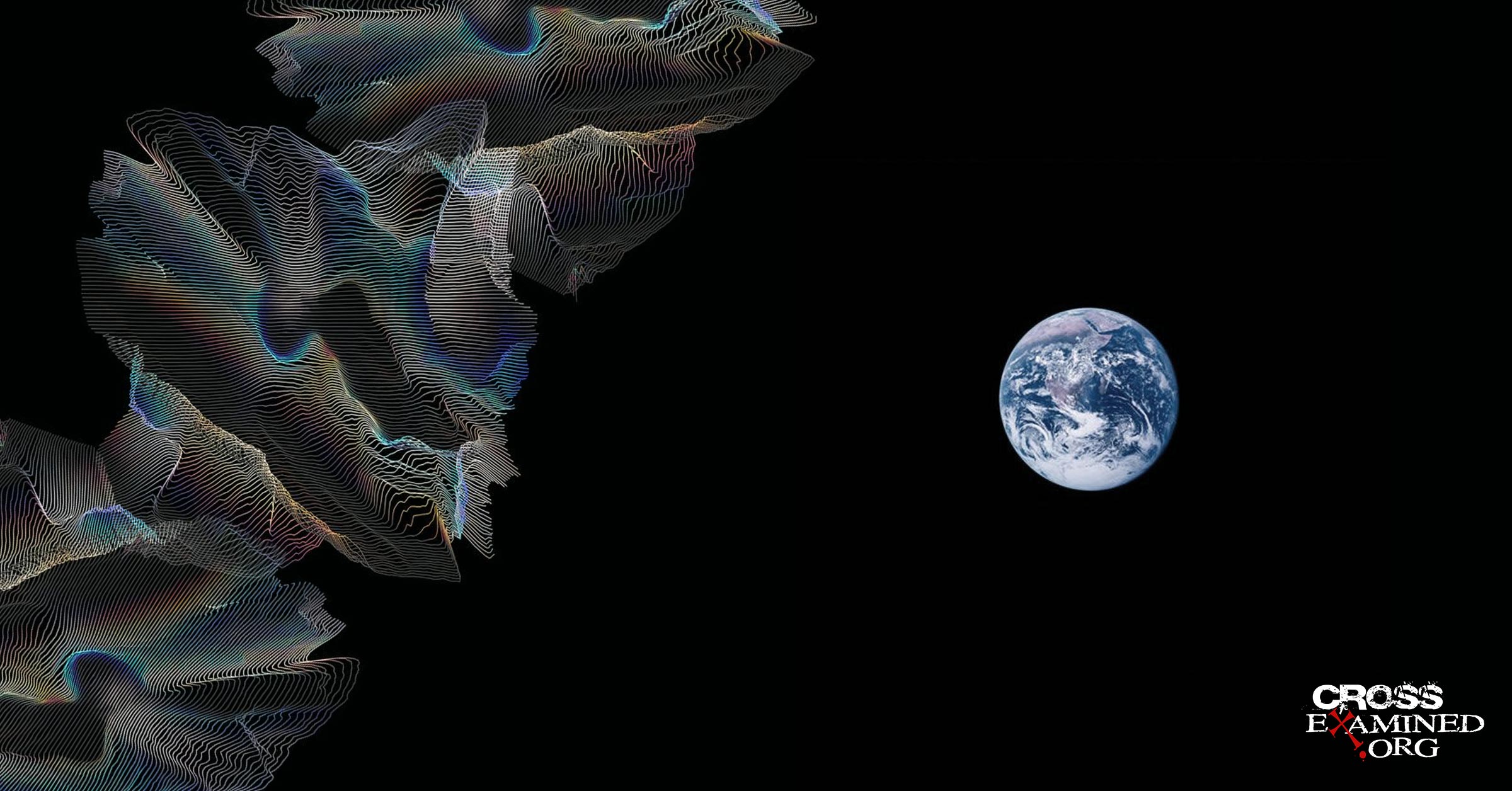In his book Pale Blue Dot, the late astronomer Carl Sagan had this to say about the above photograph taken aboard Voyager I:
Because of the reflection of sunlight… Earth seems to be sitting in a beam of light as if there were some special significance to this small world. But it’s just an accident of geometry and optics… Our posturings, our imagined self-importance, the delusion that we have some privileged position in the Universe, are challenged by this point of pale light. Our planet is a lonely speck in the great enveloping cosmic dark. In our obscurity, in all this vastness, there is no hint that help will come from elsewhere to save us from ourselves.
Sagan reiterates what is commonly known as the Copernican Principle, or the Principle of Mediocrity. It’s the idea that earth and by extension human beings aren’t significant in the grand scheme of things. We’re just a random speck of dust revolving around an average star in the corner of an average galaxy.
Sagan was so confident of his view that he predicted the Milky Way galaxy probably contains as many as a million advanced civilizations. But is this a reasonable conclusion? I think it’s unlikely. In fact, the more we learn about the requirements for habitability, the less probable life in other places becomes. To demonstrate this claim, I want to highlight seven different habitability requirements — or habitable zones — that are necessary for advanced life to exist in the universe. As far as we know, the earth is the only planet to meet all the requirements.
The Right Kind Of Galaxy
Astronomers have placed galaxies into three categories — spiral, elliptical, and irregular. Of these three, only spiral galaxies can support life. Elliptical galaxies contain mostly ancient stars that lack necessary resources — like heavy elements — that life needs. Additionally, because of the shape of elliptical galaxies, and the close proximity of the stars, stable planetary orbits are impossible.
Similarly, irregular galaxies lack the necessary qualities for habitability. For starters, their irregular shape leads to chaotic stellar and planetary orbits which result in planets colliding or brushing too closely to ultra-violet emitting stars. Additionally, large irregular galaxies possess active nuclei which spew too much deadly radiation for life to exist. Conversely, small irregular galaxies lack the necessary heavy elements for habitability.
Only spiral galaxies can support life. And not just any spiral galaxy, but one that possesses the right size and structure that can yield heavy elements and protect a host planet from deadly radiation and gravitational disruptions along the spiral arms. It just so happens that the Milky Way meets these necessary requirements.
The Right Location In That Galaxy
Not only is the right kind of spiral galaxy necessary for habitability, but the location inside that galaxy is also just as important. And that location is close to the mid-plane of the galaxy about halfway between the galactic nucleus and the external edge.
If the earth’s solar system was closer to the nucleus, it would face the onslaught of radiation and overwhelming gravitational force from the galactic black hole nucleus. Moreover, this territory inside the galactic habitable zone contains trillions of comets, which combined with the erratic gravitational forces would inevitably lead to several comet collisions and wipe out any existing population. Conversely, stars located towards the outer galactic edge can only host small terrestrial planets that are too small to retain an atmosphere or sustain plate tectonics.
This galactic habitable zone is usually represented by a thin ring that circles around the Milky Way galaxy. Only stars that land on this narrow ring can realistically sustain life. Furthermore, our solar system is located in a safe place between the Sagittarius and Perseus spiral arms. Spiral arms are dangerous places with fluctuating radiation and erratic orbits. And as many astronomers have pointed out, this relatively gas and dust free environment proves to be the ideal location for viewing the universe and making further discoveries.
The Right Kind Of Star
In addition to being in the right location of the galaxy, the star must possess the right qualities to support life. Of the stars located in the galactic habitable zone, about 3 percent of them have the right qualities for any kind of life to survive. In fact, to emit a sufficient level of ultra-violet radiation, the host star must be virtually identical to the sun. Larger stars than our sun give off extreme variations of UV radiations, as do smaller stars than the sun. Our sun is also metal-rich compared to most stars making it possible to host planets like earth.
While it’s true that the sun is an average star (a yellow dwarf) as far as size goes, its average quality is essential for life. In addition to emitting erratic levels of UV radiation, larger stars burn their fuel faster and have shorter life spans — too short to host advanced life. On the other hand, smaller stars, like red dwarfs, give off such low levels of energy that a planet would have to orbit extremely close to it. This close proximity inevitably leads to tidal locking where one side of the planet bakes in unending misery while the opposite side remains frozen in perpetual darkness.
The Right Distance From The Star
Next, for habitability to be possible, a planet must maintain liquid water. And this is only possible for planets that are the right distance from their host star. For example, if the earth were slightly closer to the sun, all water would evaporate. If it was slightly further away, all water would freeze. Furthermore, for water to remain, the planet must have the appropriate level of atmospheric pressure.
The planet must also receive the right amount of UV radiation, and much of this depends on its distance from that star. If it receives too little, vitamin D levels would be too low to produce strong bones, prevent cancer, and maintains healthy immune systems. On the flip side, if UV radiation were stronger, most if not all would suffer from skin cancer and bad eyesight.
Additionally, a planet must be the right distance from its host star for photosynthesis to occur. While some life-forms could exist without photosynthesis, large-bodied warm-blooded animals could not.
The proper distance also impacts its rotation rate. As I mentioned earlier, a planet that is close to its host star experiences tidal locking, meaning it does not rotate due to the intense gravitational force. This results in one side of the planet enduring an onslaught of heat and radiation while the opposite side remains perpetually in the cold dark. This kind of planet could not sustain life as it could not have liquid water. Conversely, if the earth rotated faster, we’d experience extreme temperatures and atmospheric winds that would make life virtually impossible.
The Right Kind Of Neighbors
While the other planets in our solar system aren’t suitable for life, they still serve a purpose in contributing to the earth’s own habitability. For starters, larger planets such as Jupiter and Saturn serve as earth’s bodyguards against comets or asteroid bombardments. Due to their size and relative force of gravity, these large gas giants act like giant vacuum cleaners for potentially dangerous collisions. Even smaller planets like Venus and Mars offer protection despite their limited gravity. Mars, for example, stands between us and an asteroid belt and has taken a few hits for us over the years.
Additionally, these other planets have contributed to important scientific discoveries. Johannes Kepler formulated his famous laws of planetary motion by observing these other planets. One of these discoveries was that planetary orbits are not circles but ellipses. And these discoveries served foundational for Newton’s laws of motion and gravity, which became the foundation for Einstein’s General Theory of Relativity.
The Right Kind Of Moon
Of the dozens of moons in our solar system, the moon if fifty times larger than any other moon compared to the mass of its host planet. Moreover, the moon orbits more closely to earth than any other large satellite yet discovered.
The size and proximity of the moon stabilize the earth’s rotation on its axis around 23.5 degrees. If the moon were smaller, like the Martian moons, the tilt would wobble about 30 degrees like Mars. The results of an unstable title would be catastrophic. If the North Pole, for example, were leaning more sunward during the summer, most of the Northern Hemisphere would experience months of scorching heat and perpetual daylight. Then in the winter months of the year, any survivors would experience extremely cold dark winters that would make Antarctica feel mild by comparison.
With no tilt, the earth would not experience seasons and rain distribution across the planet. The result would be large swaths of arid land uninhabitable for life.
It’s also worth noting that earth is the only place in our solar system where a perfect solar eclipse is possible. This phenomenon is possible because while the moon is four hundred times smaller than the sun, it is four hundred times closer making them both appear the exact same size from our vantage point. This phenomenon is highly coincidental if the earth is just a “pale blue dot.”
The Right Kind Of Planet
Finally, the right planet is also necessary for habitability. For example, life could not survive on a gas planet, but one made of rock. Additionally, this planet must have liquid water. But if the planet was perfectly smooth, the entire planet would be submerged in water. Fortunately, the earth has continents, mountain ranges, and valleys which allow for life to exist simultaneously with oceans and lakes. And this is made possible by plate tectonics. Yes, plate tectonics can be dangerous, but without them, life could not exist. And earth is the only planet in our solar system with plate tectonics.
A planet must also maintain a powerful, stable magnetic field. Without this protective fence, the earth’s atmosphere would eventually float away towards the sun making it impossible to sustain life. Of course, to maintain the right magnetic field requires the right internal composition of a rocky planet. Specifically, it requires a liquid iron outer core and a solid iron inner core.
Additionally, the planet must also have the right kind of atmosphere. In particular, the ozone shield is necessary for protecting a planet from receiving too much harmful radiation. Currently, earth’s ozone layer absorbs about 98 percent of the sun’s harmful UV radiation while allowing the beneficial radiation to pass through to earth’s surface. In this sense, the ozone layer acts as a shield or a type of sunscreen protecting us from too much of the sun’s radiation but allowing just enough beneficial for life.
Just A Pale Blue Dot?
So many are the requirements necessary for habitability that extraterrestrial life seems improbable. Back in the 1960s, when Sagan’s theory began to pick up steam, scientists launched the search for extraterrestrial intelligence (SETI). When the search began, scientists were convinced we would find advanced life on the moon or Mars. Now the search is more modest. They hope to find some kind of lower life form to an obscure moon orbiting Saturn that may or may not contain liquid water. In other words, the hundreds of millions of dollars invested in SETI have been spent to no avail.
Additionally, this search raises some important questions. If life really exists all over the universe, why haven’t they found us yet? After all, are we so conceited to think that we are the most advanced civilization? Surely, if millions of other civilizations exist, some of them would have greater capabilities than us.
Furthermore, good scientific theories are always falsifiable. But isn’t this theory unfalsifiable? At what point will those who say the universe is teeming with life say they were wrong? After sixty years of searching, they’re still saying, “Just give us more time. We’ll find it.” And they could keep saying it for a thousand years. In the end, the search for extraterrestrial life seems like a fools errand. So many are the conditions necessary for habitability. Earth appears to be pretty special after all.
Recommended resources related to the topic:
God’s Crime Scene: Cold-Case…Evidence for a Divinely Created Universe (Paperback), (Mp4 Download), and (DVD Set) by J. Warner Wallace
God’s Crime Scene: The Case for God’s Existence from the Appearance of Design (mp4 Download Set) by J. Warner Wallace
God’s Crime Scene: The Case for God’s Existence from the Appearance of Design in Biology DVD Set by J. Warner Wallace
What is God Like? Look to the Heavens by Dr. Frank Turek (DVD and Mp4)
I Don’t Have Enough Faith to Be an Atheist (Paperback), and (Sermon) by Norman Geisler
Ryan Leasure holds a Master of Arts from Furman University and a Masters of Divinity from the Southern Baptist Theological Seminary. Presently, he’s working on a Doctor of Ministry degree from the Southern Baptist Theological Seminary. He also serves as a pastor at Grace Bible Church in Moore, SC.
Original Blog Source: https://bit.ly/3e7HgtE




